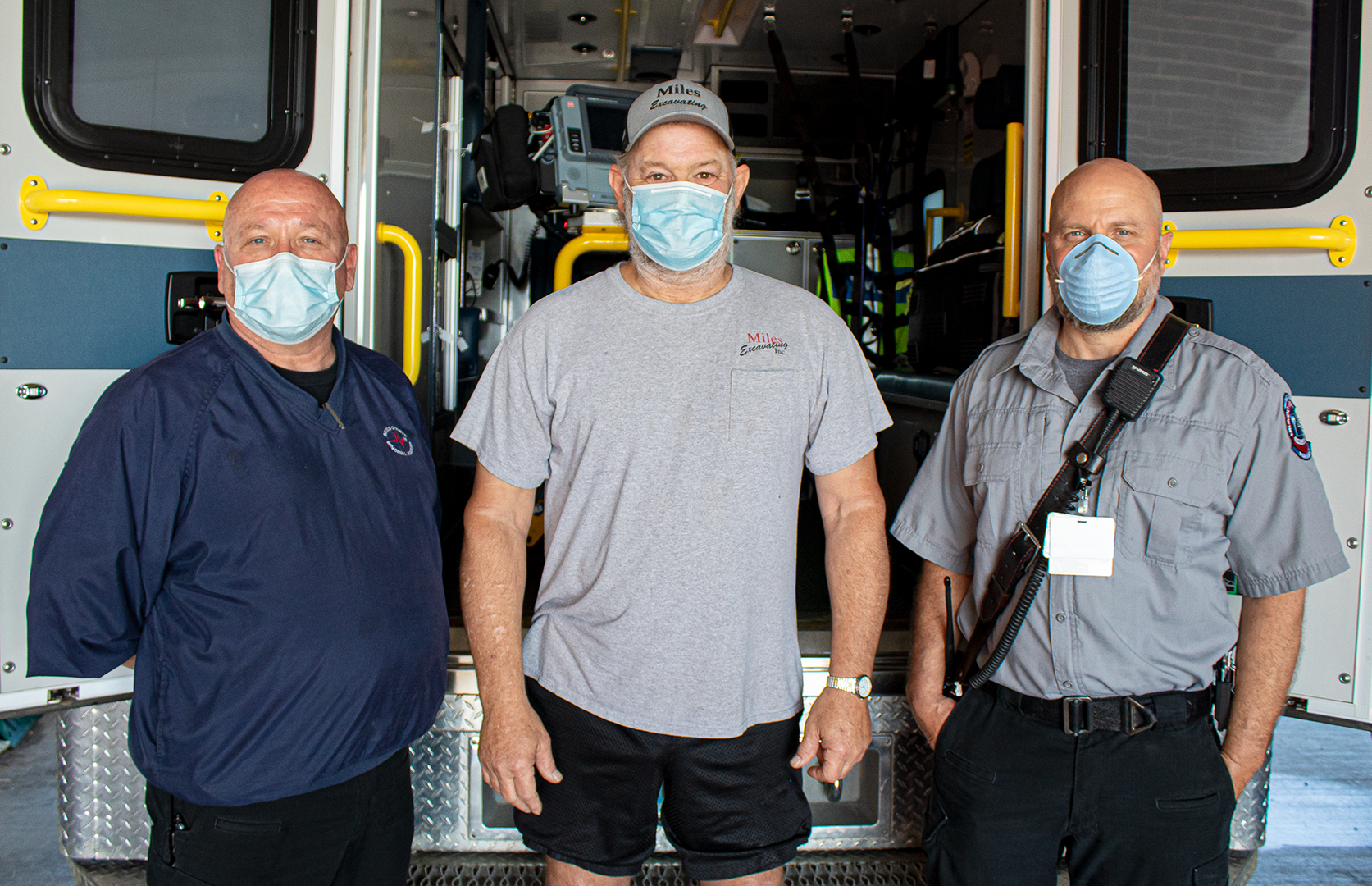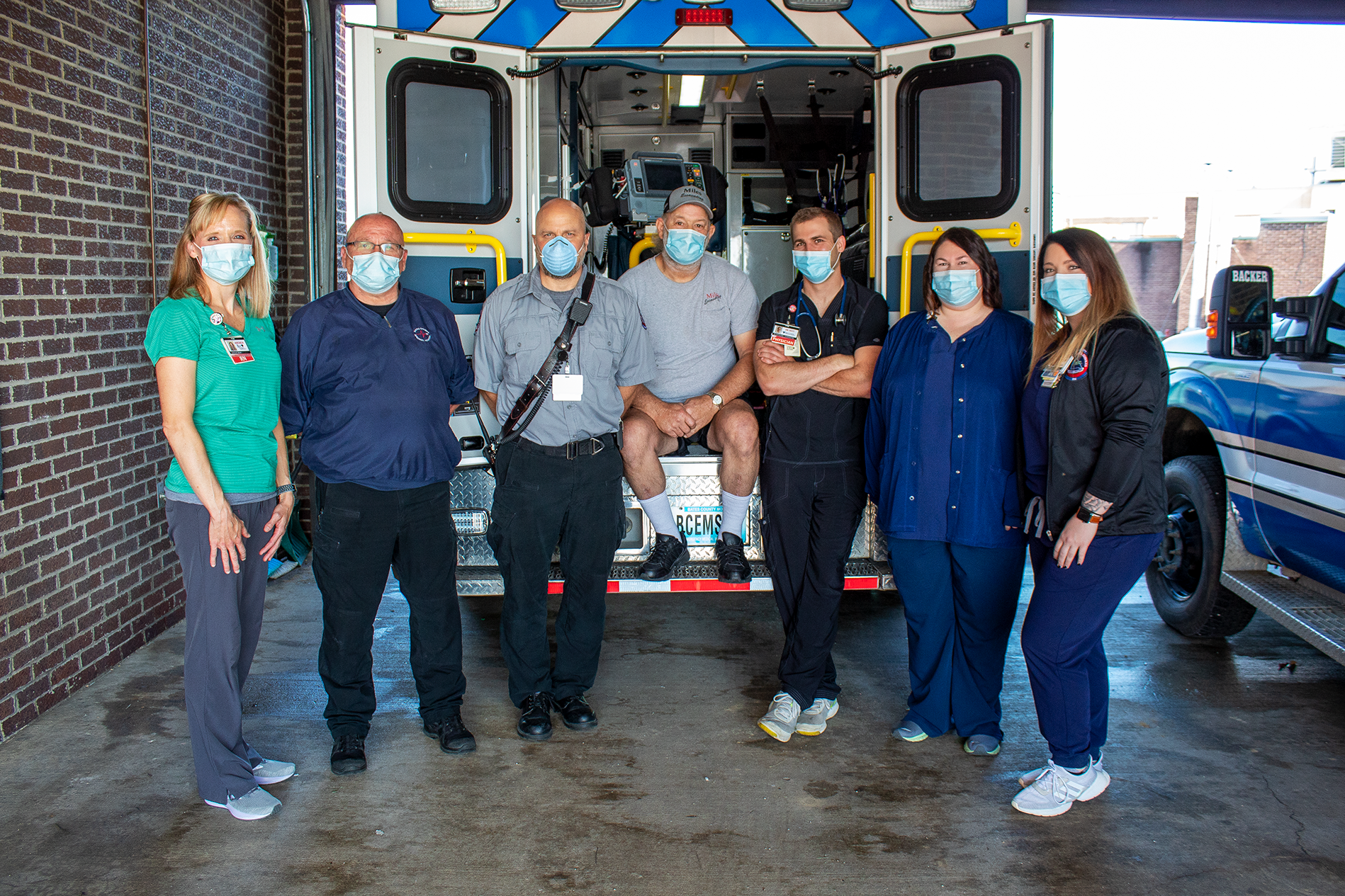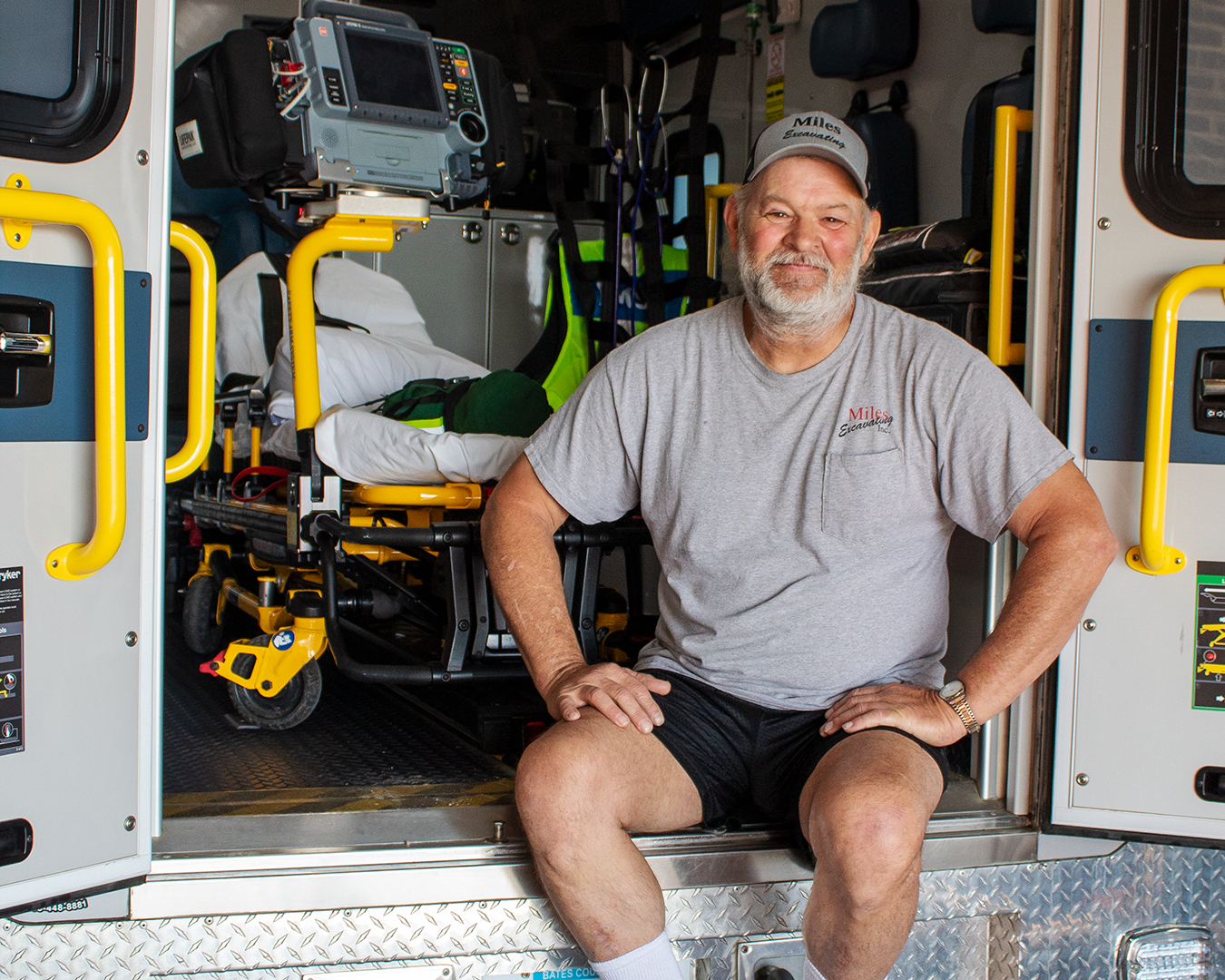Knowing the Signs
Gene Schroeder, Patient Story
The first symptoms Franklin (Gene) Schroeder experienced on the morning of December 12, 2020 were not the usual warning signs of a heart attack. As he and his wife Michelle got ready to leave their home in Butler to work on their property in Adrian, Missouri, the farm where Gene grew up, his discomfort was just enough to notice, but not enough to imagine he was having a heart attack.
“It just felt uncomfortable. I was like, no big deal. It’s not like I didn’t work through pain before.”
As a pipe layer, the 54-year-old had unknowingly worked through a heart attack, years earlier, but on this morning, he would not be able to ignore it.
Recognizing the Signs
Even when Gene stopped to rest, his symptoms increased. Indigestion worsened to nausea, and he had pain in the back of his left arm. Getting up to “walk it off”, by the time he reached the kitchen he was sweating, his skin was cold and clammy, and he couldn’t hear or speak. When he dropped to one knee, Michelle called 911 for an ambulance, and a unit from Bates County Memorial Hospital ambulance services was on the way.
In those moments, Gene thought of a conversation with his best friend, who had lost his mother to cardiac arrest the week before. Some of his symptoms were in step with what his friend had described.
Gene said, “That’s when I knew I was having a heart attack.”
Minutes later, a team of advanced life support paramedics from BCMH arrived at the Schroeder’s home, and a paramedic met him on the porch, catching him just as he collapsed. They quickly assessed Gene began interventional efforts. A quick call to LifeFlight Eagle ruled out a transfer due to weather that day, so the team took Gene to the Bates County Memorial Hospital emergency room so he could be stabilized before transfer.
“That Guy”
That was the start of a long, eventful day for Gene and Michelle, but one of the memories that stand out for Gene was the lifesaving actions of one BCMH paramedic. He didn’t know his name, but he was keenly aware of everything “that guy” did for him. Gene remembered how the paramedic talked to him in the ambulance, how he urged him to stay awake, and how much it helped in his state of pain and fear. Gene said he also made sure his wife could be near him in the emergency room, and assisted with arrangements for his transfer to Overland Park Regional Hospital.
At BCMH, as the emergency room team began their efforts to stabilize him, Gene threw up and immediately felt better. He asked to sit up, and that was the last thing he remembered before he went into cardiac arrest.
Gene “coded” twice, and twice the BCMH team brought him back.
Gene said, “Everybody asks me if I saw a light, but no. I blacked out. They shocked me [out of] A-fib, and it was like I was here, but I wasn’t here. When they shocked me again, I remember coming back to, and I breathed so much and so hard I was grabbing people, and I remember that guy got me back down, laid me back down, he kept talking to me—,” Gene pauses, choked up.
“I owe my life to him. He saved me.”
He added, “I look back on it now and I don’t know what would have happened if that guy … Everybody in the ER did their part, they did what they were trained to do, but this guy went above and beyond,” Gene said.
Barriers Removed
Later that day, Gene would have two stents placed at Overland Park Regional, an additional three stents in February, and one more in April. After his first procedure in December, his specialists told him he had suffered a previous heart attack to his left anterior descending (LAD) artery, what some refer to as the “widow maker”.
“Looking back on it after all of this was over, I know exactly when I had it,” Gene said, referring to a day five years earlier while working in very cold, outdoor conditions. He recalls he had bouts of feeling overheated, breathless, sweaty and nauseated over a period of two days. He survived this heart attack without knowing what it was, and in a strange and somewhat rare twist of events, that blockage prompted his heart to create alternate paths to circumvent the blocked artery – possibly what allowed him to survive the cardiac arrest he experienced in December of 2020.
Gene had also experienced pain in his left hip for several years, which he described as an alternating cold and hot sensation, depending on his activity. He was accustomed to pushing through the pain, but while completing cardiac rehabilitation at BCMH, his therapist, Andrea Davis, RN, urged him to stop exercising when he reached those barriers.
His final stent placement in April at Research Hospital cleared a 75% blockage in the artery that travels down the left leg. Immediately after, Gene felt a significant difference, especially while exercising. The pain in his hip was gone, and he could exercise for as long as he needed to.
The Part You Don’t Hear About
Gene tackled recovery as he does many things: with gusto. He quit smoking as of the day he coded twice in the ER. He also signed up for a course of cardiac rehab. He would have preferred to go right back to work, but his doctors insisted he complete the program before returning to his pipelaying occupation. The slower pace of recovery and rehabilitation was frustrating to Gene, who typically plays on three softball leagues in a season, and just two years ago, was a member of Butler’s former semi-professional football team, the West Central Warriors.
To date, he has not suffered another cardiac event, but there were times, he said, when he wasn’t so sure. At first, every time he felt a twinge, or nausea, he wondered if he was about to drop dead.
“I had never had anxiety before,” he said. “Awhile later, I was sitting at home, and I felt like I was going to die. I went to the emergency room and he was there [‘that guy’], and he calmed me down.”
Tests showed Gene’s heart was fine; he was having a panic attack.
“Usually, people will have apprehension, stress, anxiety, or post-traumatic stress about the situation,” Dr. Doyle Witt commented, the BCMH emergency physician who cared for Gene in December.
Gene said he struggled with anxiety until, one day, he decided he’d had enough. He told Michelle, “That’s it. I’m not living like this anymore. If I hurt a little bit, I’ll slow down, but I’m not living my life like I’m going to die every day.”
Definitely a Win
In April, the hospital arranged for Gene to meet some of the BCMH team members who took part in his care on December 12, 2020. Gene met Dr. Witt, April Morrow, RN, Chelsay Langford, RN, and “that guy” who saved his life.

Until then, Gene thought it was one paramedic helping him that day, but in truth, it was two. Rich Glossup took the initial call and was with Gene on his way to BCMH, and Russell Whisenand arranged for his transfer, and kept him alert on the transfer to Overland Park Regional. When Gene coded in the ER, Rich and Russ both took an active role in his care.
Rich said, “It was an extraordinary event for us to have somebody code twice like that, and have a good outcome. So, definitely a win for him and for us, and we’re very happy for him.”
Rich knows what it’s like to live in a rural area without close proximity to a hospital or emergency care.
“I think sometimes, when you have a hospital in town, people take it for granted,” said Rich. “I live in Bourbon County, Kansas where we lost Mercy [hospital], and the people there didn’t see it coming until it was upon them. To have a hospital here is a big deal to people, whether they realize it or not,” he said.
Gene wanted to complete cardiac rehab at his hometown hospital because it was close to home, but he was also impressed by the emergency care he received at BCMH — they had earned his trust. He graduated from the cardiac rehabilitation program in May, 2021, and was cleared to go back to work, to play softball, and to work on his 40-acre farm in Adrian.


